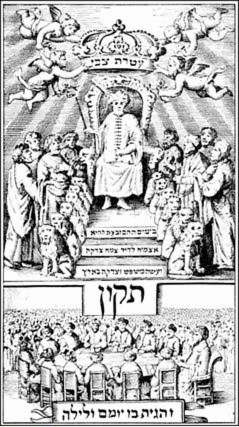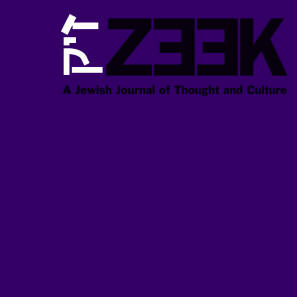 June 07
June 07
Sabbatai Zevi at Prayer
David J. Halperin
 Sabbatai Zevi (1626-76) was the most notorious Jewish Messianic claimant since Jesus of Nazareth. Born in Izmir, on the western coast of Turkey, he declared himself Messiah at age 21. He repeated this proclamation, intermittently, for the next seventeen years. But only in the spring of 1665, when Sabbatai’s claims were echoed by the young Kabbalistic prodigy Nathan of Gaza, did anyone start to pay attention.
Sabbatai Zevi (1626-76) was the most notorious Jewish Messianic claimant since Jesus of Nazareth. Born in Izmir, on the western coast of Turkey, he declared himself Messiah at age 21. He repeated this proclamation, intermittently, for the next seventeen years. But only in the spring of 1665, when Sabbatai’s claims were echoed by the young Kabbalistic prodigy Nathan of Gaza, did anyone start to pay attention.
Then, it seemed, the whole world listened. For the next sixteen months, the Messianic movement headed by Sabbatai and his “prophet” Nathan swept the Jewish Diaspora like a brushfire. From London to Poland, from Hamburg to Yemen, Jews believed in perfect faith that Sabbatai Zevi was the promised Redeemer, about to lead them back to the Holy Land and rebuild the Temple.
In September 1666, when the excitement was at its height, Sabbatai Zevi was brought as prisoner before the Turkish sultan Mehmed IV. He saved himself by converting to Islam. He lived ten years longer – a strange double life, practicing Islam and Judaism together, surrounded by an entourage divided between the Jewish “turban-wearers” who had followed him into Islam, and those who stayed faithful to their Judaism. The Messianic hope faded. Yet, throughout the Jewish Diaspora, thousands remained convinced that their “Mehmed Effendi,” formerly known as Sabbatai Zevi, was still the true Messiah.
His death in 1676 shook the faith of many of his followers. But not all. Down to the end of the twentieth century, the Turkish remnants of the nominally Muslim sect of the “Dönmeh” continued to pray, in their archaic Judaeo-Spanish, “Sabetai, Sabetai, esperamos a ti” – “Sabbatai, Sabbatai, we wait for you.” Some, perhaps, are still waiting.
The story of Sabbatai Zevi has been told many times, most definitively by the master scholar of Jewish mysticism, Gershom G. Scholem. Soon English readers will be able for the first time to experience Sabbatai’s life directly through the eyes and minds of his contemporaries, in the texts I have translated for my book Sabbatai Zevi: Testimonies to a Fallen Messiah – to be published this month by the Littman Library of Jewish Civilization.
Following this introduction are two extracts from these translations, adapted for publication in Zeek. The first is from the text called “the Najara Chronicle,” an eyewitness, diary-like account of Sabbatai Zevi’s post-conversion life in 1671, as a minor functionary in the sultan’s court at Adrianople. The author, Jacob Najara, was a Gazan rabbi, grandson of the famous liturgical poet Israel Najara. In the spring of 1665, when Sabbatai Zevi was first proclaimed Messiah by Nathan in Gaza, Najara was Sabbatai’s host. Almost six years later, at the end of January 1671, the still-faithful Najara arrived in Adrianople to pay his former guest a visit of his own. His narrative of his experience, preserved in one Dönmeh manuscript, provides a close-up view of the enigmatic Messiah that is without equal in the contemporary literature.
The picture is not pleasant. We see Sabbatai Zevi as a disloyal, self-pitying husband and a brutally oblivious father. When this extract begins, Sabbatai has just divorced his wife Sarah, depicting their seven-year marriage as a term of slave labor, blaming her for his persistent sense of being a leper and outcast. (Later he will take her back, and she will follow him loyally into exile.) His son Ishmael, born two years after Sabbatai’s conversion, was – in accord with the alleged dictates of Ottoman Islamic law – placed with his mother.Yet, here we find that the boy is removed from Sarah’s custody and handed over to Sabbatai through the machinations of his patron Vani Effendi, the Ottoman court preacher.
The child, as a child, is invisible to his father. All Sabbatai can see is the boy’s symbolic role, through his name “Ishmael”/“Israel,” as a fusion of Sabbatai’s Islamic and Jewish identities, and as the imagined partner-Messiah (“Messiah ben Ephraim”) to Sabbatai’s “Messiah ben David.” And so the helpless three-year-old is hustled into an assembly of his father’s enthusiasts, there to have his foreskin slashed away. Hymns and prophecies, unintelligible to the child, are chanted over him, while his body is made into a prop in one of his father’s dramatic performances.
To Vani Effendi and the rest of the Turkish authorities, Sabbatai is a Muslim. Over and over Najara assures us that the Turks witness Sabbatai and his followers behaving as Jews, and do nothing about it. (Yet Sabbatai takes care that the Turkish grandees are not watching too closely while he circumcises his son.) Throughout the Najara Chronicle, one has the strong sense that Islam, and the act of converting to Islam, do play some essential role in Sabbatai’s private eschatology—but not the role that Vani Effendi, or Vani’s master the sultan, would have imagined for them.
Something of Sabbatai’s real feelings toward his new religion comes out when he orders his “turban-wearing,” nominally Muslim followers to recite the Alenu prayer “in a loud voice along with the Jews … paying no attention to the Gentiles who watched them.” The Alenu, in its original uncensored form, praises God for having made the Jews different from “the nations of the world,” who “bow to vanity and emptiness and pray to a god who cannot save.” As recited by Sabbatai and his “turban-wearers,” it is a shout of defiance—understood by them, incomprehensible to the watching Muslims—against the religion to which they had converted.
If the Najara Chronicle gives an indisputably authentic first-hand picture of Sabbatai Zevi, the second text translated here displays something of the golden afterglow of Sabbatai’s charisma. It is taken from an untitled hagiography of Sabbatai Zevi, written in 1692 in Frankfurt-am-Main by Abraham Cuenque, itinerant agent for the Jewish community of Hebron. Cuenque was at the time winding up a ten-year fund-raising tour of the European continent. He wrote the hagiography at the urging of his German-Jewish hosts, who had a fascination with the great Messianic event that convulsed the Jewish world a generation earlier, and whom it suited Cuenque to titillate with hints of inside knowledge.
The story told in this extract will have taken place in 1663, when Sabbatai—not yet an international celebrity—was an ascetic in Jerusalem, who might be sent as emissary from the Jerusalem community to the Egyptian-Jewish magnate “Joseph Raphael,” to persuade him to intercede on the community’s behalf with the Ottoman government. (The name of this dignitary was actually Raphael Joseph Chelebi.) On his way to Egypt, Sabbatai allegedly made a stop in Cuenque’s home town to worship at the shrine of the patriarchs in the cave of Machpelah; there Cuenque allegedly encountered him. In this passage Cuenque relates, with the literary skill for which he was famous in his time, his memory of his meeting with the Messiah.
Memory? Or invention? Throughout the Sabbatai Zevi hagiography, Cuenque emerges as a wildly dishonest writer for whom historical truth was at best a springboard to launch him toward his (normally self-interested) goals. His claims are seldom to be trusted. Yet perhaps his account, even if literally untrue, nonetheless conveys something of the extraordinary and still unexplained charisma that surrounded Sabbatai Zevi. Perhaps, even as fiction, it has its light to shed on the enduring mystery of what made this weak, confused, peevishly brutal man so irresistibly attractive to so many, and for so long.

1. The Messiah Circumcises His Son
(translated from the “Chronicle” of Jacob Najara by David J. Halperin)
On the fifth of Nisan [16 March 1671], [Sabbatai Zevi] went to the Gentile archives and divorced his wife. He applied to himself the Biblical verse, “Six years shall [the slave] labor … and in the seventh year [he shall go out free; Exodus 21:2],” for on that day a full seven years had elapsed since he had married her. He made considerable effort to take his son Ishmael into his custody, but she did not want to let him go. For the boy was young, and the [Muslim] laws require that a child remain with his mother the first seven years.
On the seventh day of Nisan [18 March], he was dining in his house with this rabbi [Najara] [1]when who should appear but his beloved son Ishmael. Vani Effendi, it seems, had sent to the boy’s mother, saying: “Send him to be with his father!” At this Amirah [2]rejoiced greatly. It was for this reason, he said, that he had tried mightily in days past to take the boy with him and rescue him, yet had met with no success – until this day, which was the day offering was brought by Elishama son of Ammihud, prince of the tribe of Ephraim. [3] The name “Elishama” is [in Hebrew] an anagram for “Ishmael”; this is an allusion to Messiah ben Ephraim. [4] “Tomorrow,” said Amirah to this rabbi [Najara], “I wish to circumcise him, for he is now a full three years old. This is in accord with the hidden meaning of the verse, ‘Three years it shall be to you “uncircumcised” […] and in the fourth year all its fruit shall be a thing holy, for the giving of praises.’ ” [5]









